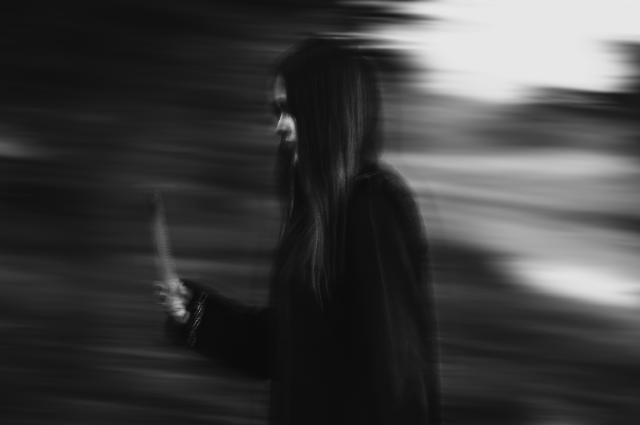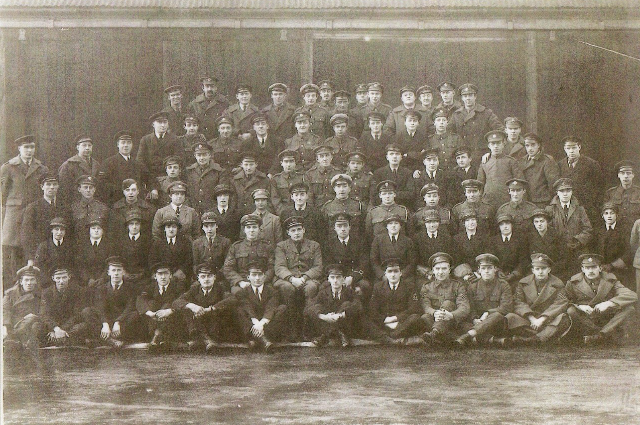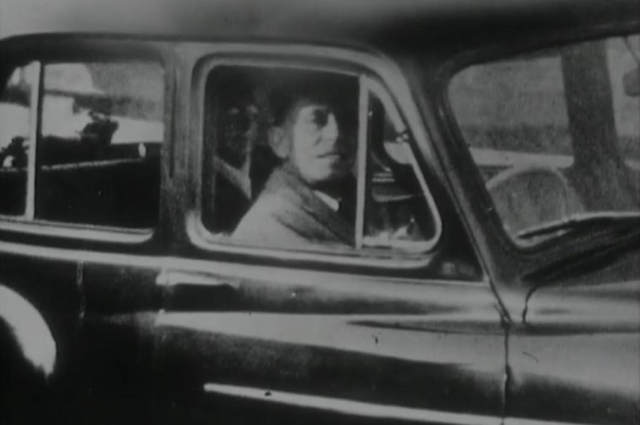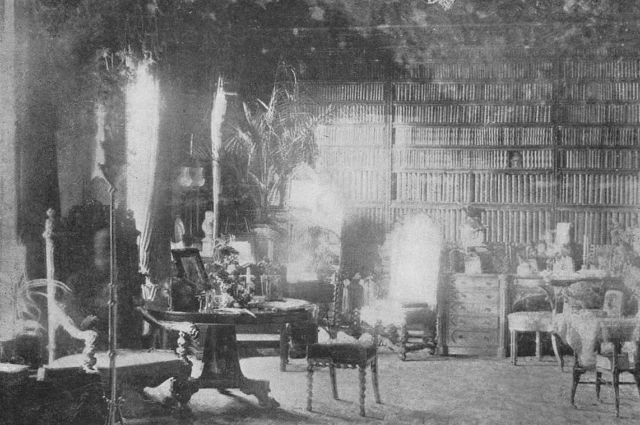
Photo by Sayan Ghosh on Unsplash
Unverified witness accounts have always been the weak points of ghost stories, but what if a skeptic reverend, a distinguished army commander, or even a king talked about it?
In this article, I will cover the complete backstories of the most famous ghost photos to find out if any of them turned out to be fake.
The Goddard Squadron Ghost Photo
On November 11, 1918, when the Armistice came into effect, a squadron portrait of the British Royal Air Force was taken at the HMS Daedalus training facility, or as it is more widely known, RNAS Lee-on-Solent airfield in South England, and something unusual was noticed after Flight Lieutenant Victor Goddard, the later Air Marshal and World War Two commander, along with many other pictures, put it on a noticeboard to let the soldiers who wanted a copy of the image write their names below.

Image resource: Skeptic
It's not easy to spot the strange phenomenon, But if you take a closer look at the fourth man from the left in the top row, another head appears next to his. The only issue with this is that no one was standing there; however, the other World War One veterans in the photo claimed that the face was identical to Freddy Jackson, an air mechanic who died in an accident two days prior to the image being taken after walking too close to an airplane propeller, and his funeral took place on the day of the photo shoot. The story of the photo was first published in 1975 in Goddard’s book.
In Flight Towards Reality, he revealed that the image was examined thoroughly, but experts concluded it wasn’t manipulated. It is important to emphasize that this photo is as official as possible. The photo studio of the aforementioned Alexander Bassano opened in the 1850s in London and became one of the most important studios in the country, while Bassano himself was a leading royal and high society portrait photographer in Victorian London. The master retired in 1903, but his brand remained popular throughout the century.
Today, over 40,000 Bassano negatives are held at the British National Portrait Gallery, and this is the most probable place where the original negative of the Goddard Squadron Ghost photo is kept. But skepticism still remained because, for example, if you compare the face of the supposed ghost and the soldier in front of it, they align almost perfectly, which suggests a simple photo error. On the other hand, the specter is clearly “going bald”, While half of the soldier's forehead is covered by the service cap.
We must talk about Blake Smith too, a journalist who tried to investigate the origins of the story but couldn’t find any records on Freddy Jackson or the propeller incident. There was only a Frederick William Jackson who died of heart failure in an infirmary on October 30, 1918, after being discharged in March of 1918. But then, how could those soldiers recognize Freddy Jackson if he doesn’t appear in historical records? The background story is a bit hazy overall, but the reputation of the photographer still gives the image credibility.
The Backseat Ghost
On March 22, 1959, 44-year-old Mabel Chinnery was visiting her mother’s grave in Ipswich, England, when she took a picture of her husband waiting in the car, but after developing the photograph, they noticed a scary figure sitting behind Jim Chinerry in the backseat. According to Mrs. Chinnery, the dark stranger looked a lot like her mother, Mrs. Ellen Hammell, who was buried a week earlier. The unexplained phenomenon was reported in several British outlets, but on June 28, 1959, Parade magazine in the US featured the story as well, and they claimed to have asked for the opinion of an expert, who ultimately concluded it wasn’t fake. Strangely, it was never revealed who the expert in Parade magazine was.

Image resource : skeptic
The explanation Is weird in many ways since there are countless ways to manipulate an image. In this case, two things strongly indicate double exposure, a technique that combines two different exposures on the same film. First, the white collar of the figure overlaps the material of the B-pillar of the 53 Hillman Minx. The second is that in the rear window, a body part that’s most likely a shoulder and presumably belongs to the alleged ghost is abnormally positioned, and the apparition is somehow unnaturally close to the front seat. Unverified sources stated that the lady had used an Eastman-Kodak Brownie camera, a very popular model at the time.
Chuck Baker, a real expert, told Skeptic.com that various models could easily have taken a double exposure in the 1950s because despite the fact that the manufacturer had already introduced Manual and Automatic double exposure prevention technologies, they weren’t standard on all devices. Regarding Mrs. Chinnery’s photo, the most probable solution is that before the mother’s death, she was captured on a particular roll of film, then Mabel took a second shot on the exact same film and frame about her husband, and the ghostly effect was created. But whether it was accidental or not remains unclear to this day
Lord Combermere in his Favourite Chair
Wellington Henry Stapleton Cotton, 2nd Viscount Combermere, died on December 1, 1891, at the age of 73, and the funeral took place on December 5 at St. Margaret’s Church in Wrenbury, Cheshire. The British noble lived a pretty eventful life; he was born in Bridgetown, Barbados, in the British West Indies, when his father was the Governor there. Her mother was the second wife of his father, and unfortunately, he was the only surviving son.
As a young man, he matriculated at Oxford. In 1837 and soon joined the military, where he retired in 1866 as a colonel. He served as a conservative MP from 1847 to 1857. In 1865, he succeeded his father as viscount and was admitted to the House of Lords. In 1844, Derbyshire native Susan Alice Sitwell wed Lord Combermere. The pair went on to have two boys and two daughters. August 1869 saw the wife’s death; Lord Combermere, who had been married for 22 years, passed away at his St. James’ Place residence in London from coronary thrombosis. Not to be forgotten is that the Cotton Family of Combermere Abbey has a rich history and is descended directly from the ancient Kings of Wessex, Charlemagne, and Henry II of England. Their primary residence was the Combermere Abbey in Dodcott cum Wilkesley, Cheshire, which was originally a Savigniac and later Cistercian monastery founded in 1130 or 1133, but by 1275 it was deeply in debt and was removed from the abbot’s management.

Image resource: Arthur Conan Doyle Encyclopedia
After King Henry VIII ordered the monastery’s dissolution in 1538, Sir Roger Cotton acquired it and converted a portion of the abbey into a country residence while demolishing the church and the majority of the other buildings. The funeral of Lord Combermere in 1891 was attended by the family, acquaintances, and staff members too. At the time, Lady Sutton was renting the Abbey for herself and her siblings and asked her sister, Sybell or Sybil Corbet, to take a photo of
The empty library while everyone was out. According to the story, she set up her camera with its shutter open for one hour and left the room. The photo was developed only months later after the Corbets relocated, and upon closer inspection of the image, the transparent figure of a man sitting in one of the library chairs was spotted.
“It is my father. It is just the type of collar he wore, but the features are not distinct,” Lady Alexander Paget, the Lord’s daughter, commented. She said this because the facial features are very vague, but the apparition's forehead is high and bald, and there is some appearance of a beard. Relatives stated that the deceased had these features before his death and that the alleged ghost chose Lord Combermere’s favorite chair in the room.
However, many suspected tampering because long exposure is perfect for creating ghost effects on photographs. We know that the photographer left the room for an hour, and some people suggested that the butler or an old estate carpenter may have entered the library and sat down for a while, But there is no evidence for any of that, and family members claimed that all the male servants were clean-shaven and most of them were at the funeral. But if we stuck with the interloper theory, that means that an unknown old man should have sneaked in and out without being seen, which is quite unlikely.
The ghost photo of Lord Combermere hasn’t been proven to be doctored and remains unexplained to this day. Its reverse included the inscription, “The Ghost of Combermere Abbey, Miss Corbet took this picture of the library in December 1891, during the day of Wellington Henry, 2nd Viscount Combermere’s funeral.
It Is intended that the legless man in the chair on the left of the picture is a likeness of him. The Abbey is now a popular destination for tourists and a hotel where weddings and other social gatherings are regularly held.
